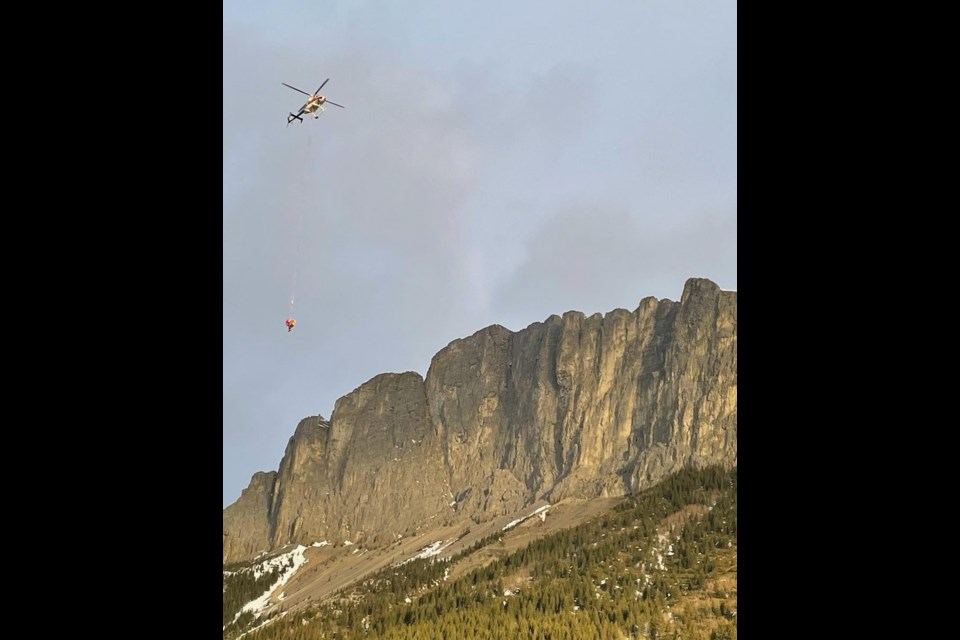KANANASKIS COUNTRY – Two people who journeyed out to hike Mount Yamnuska alone on the Easter long weekend found themselves cliffed out together on descent, where they spent the night before rescuers could reach them.
Kananaskis Mountain Rescue was called on April 9 to respond to the scramblers who lost their way taking an alternative route down the mountain after they met up along the trail and agreed to descend together.
“They decided to go down a slightly different way than what the traditional route is, which is very well-marked,” said rescue specialist Darren Vonk. “They found themselves very far down on the wrong side of the mountain, so they chose to climb directly straight up, travelling through quite extreme terrain.
“They got themselves stuck into a notch that they couldn’t proceed back down, up or around.”
Vonk said the hikers were able to alert the mountain rescue team via a weak cellphone reception which required ascending further up the mountain for a better connection.
Rescuers spent the evening trying to reach the hikers on foot but had to call in the effort around 1 or 2 a.m. when it became clear they could not fulfill the rescue without aerial support.
“We physically could not get to them where they were. They really got themselves into a pickle,” said Vonk.
Given the condition of the hikers and tolerable temperatures into the evening, the decision was made to resume the rescue with a helicopter at first light the next morning.
Vonk said the hikers were “really cold” and “mentally fried” by the time they were slung off the mountain around 7 a.m., but otherwise their conditions were OK.
Fortunately for them, rescuers were able to respond before it began pouring rain later that morning, and before an additional 20 centimetres of snow fell to the ground by the next day, which would have made for a far more uncomfortable stay on the mountain.
“We wouldn’t have been able to get to them. They would have been up there several days in very poor conditions, and we would have had to work in those poor conditions trying to get them out on foot,” said Vonk.
That weekend, crews were also busy searching for a missing person in Kananaskis and had received a call a day earlier of a climber who broke their ankle climbing a crag at Moose Mountain. A football-sized rock dislodged from above hit the climber’s leg as they were descending a crag, resulting in the break.
While some events, like falling rocks, are harder to predict in the mountains, Vonk said wearing the right gear and always checking the forecast – including up-to-date avalanche bulletins – is critical.
“If you’re gonna travel into the mountains and go scrambling you gotta look at the forecast, you at least need some proper footwear. … People are up here in crocs or rubber boots, a cotton sweater and jeans. It’s a lot of poor decision-making.”
The Local Journalism Initiative is funded by the Government of Canada. The position covers Îyârhe (Stoney) Nakoda First Nation and Kananaskis Country.




